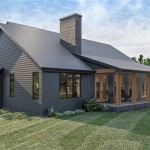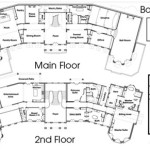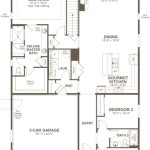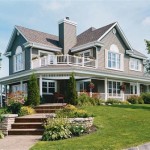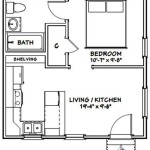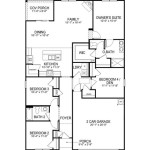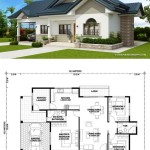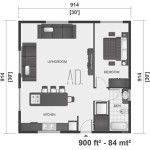Floor Plans For Pole Barn Homes
Pole barn homes, also known as post-frame homes, are gaining popularity for their affordability, durability, and customizable nature. These homes are constructed using a framework of sturdy posts embedded in concrete piers, which support the roof and walls. This construction method offers several advantages, including faster construction times, lower material costs, and the flexibility to create a wide range of floor plan layouts. When designing a pole barn home, careful consideration should be given to the floor plan to ensure optimal functionality, aesthetics, and livability.
Key Considerations for Pole Barn Home Floor Plans
Here are some key considerations when planning the floor plan for your pole barn home:
1. Size and Shape
The size and shape of your pole barn home will be determined by your specific needs and the available lot size. Consider the number of bedrooms, bathrooms, and living spaces you require, along with any additional features like a garage, workshop, or basement. Pole barns can be designed in various shapes, from traditional rectangular structures to more unique shapes like L-shapes or U-shapes, allowing for greater flexibility in creating open spaces or enclosed rooms.
2. Open Floor Plan vs. Traditional Layout
Pole barn homes are often associated with open floor plans, offering a spacious and airy feel. However, it is also possible to create more traditional layouts with separate rooms for different functions. Think about your lifestyle and preferences. Do you enjoy an open, flowing space, or do you prefer separate dining, living, and family rooms?
3. Functionality and Flow
The floor plan should facilitate efficient traffic flow throughout the home. Consider the placement of doors, windows, and hallways to create a comfortable and functional living space. For example, consider the flow between the kitchen, dining room, and living room for easy entertaining. Also, ensure easy access to bedrooms, bathrooms, and other essential rooms.
4. Natural Light and Ventilation
Pole barn homes often feature large windows and doors that allow ample natural light to flood the interior. Strategic placement of windows can enhance the overall ambiance of the home and create a connection with the outdoors. Incorporating skylights can also be an effective way to bring in natural light, especially for areas with lower ceilings. Additionally, consider the placement of fans and vents for proper ventilation throughout the home.
5. Energy Efficiency
While pole barns are known for their durability, energy efficiency is still an important consideration. Proper insulation and air sealing are crucial for achieving a comfortable living environment and reducing energy costs. Carefully consider the insulation levels of your walls, roof, and floor to minimize heat loss in winter and heat gain in summer. Consider using high-performance windows and doors for added energy savings.
6. Budget and Material Selection
The floor plan should be designed to fit your budget and desired material selections. While pole barns can be cost-effective, material choices can influence the overall expense. For example, using more expensive materials for flooring, cabinetry, and countertops will affect the final cost. Consider your budget constraints and explore cost-effective alternatives when making material decisions.
7. Customization and Personalization
One of the significant advantages of pole barns is their high degree of customization. You can personalize the floor plan to reflect your individual needs and preferences. For example, you might want to add a loft for extra living space, a screened-in porch for outdoor living, or even a basement for storage or a home office.
Examples of Pole Barn Home Floor Plans
Here are some examples of popular floor plan designs for pole barn homes:
- Open Concept: This design emphasizes a spacious and airy layout, with minimal walls dividing the living areas. This is ideal for families who enjoy entertaining or have an active lifestyle.
- Split-Level: This design features a main level with the living areas, bedrooms, and bathrooms, and a lower level that may contain a family room, home office, or guest suite.
- Ranch Style: This design typically features a single story with a wide open floor plan. It is well-suited for families with young children or seniors who enjoy one-level living.
- Two-Story: This design allows for greater square footage, offering more space for bedrooms, bathrooms, and other living areas. It can be a good option for larger families or those who want a more traditional home style.
Finding the Right Floor Plan for Your Pole Barn Home
With careful planning and the right professional assistance, you can design a floor plan that meets your needs and preferences. Explore online resources, magazines, and home design professionals to get inspiration. Once you have a clear idea of your desired layout, consult with an architect or builder who has experience designing pole barn homes. They can help you refine the plan, ensure structural integrity, and optimize the layout for functionality and aesthetic appeal.

Images Barn Homes Floor Plans Pole House Barndominium

35 X50 Barndominium Floor Plans House Pole Barn

Pole Barn Home Plans Design Cad Pro

Barndominium Floor Plans Pole Barn House And Metal Homes

Pole Barn Homes 101 How To Build Diy Or With Contractor

Barndominium Floor Plans Pole Barn House And Metal Homes Houses

Barndominium Plans Stock And Custom S Faqs Tips

Residential Pole Buildings Post Frame Barn Homes Lester

Tri County Builders S And Plans Barndominium Floor Barn House Pole

Pole Barn Home Floor Plans Beehive Buildings

